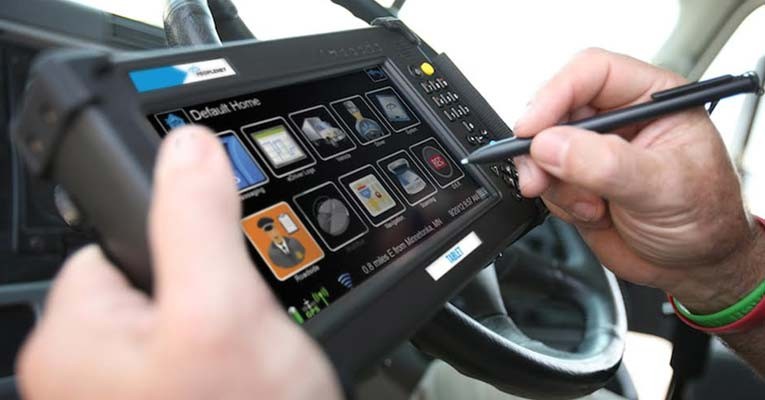Truck drivers and their changing ecosystem in logistics sector
Sumit Sharma, co-founder, GoBOLT writes about how AI and ML are influencing the road logistics in terms of safety, tracking real-time behaviors and optimization of trucks and truck drivers.

Sumit Sharma, co-founder, GoBOLT writes about how AI and ML are influencing the road logistics in terms of safety, tracking real-time behaviors and optimization of trucks and truck drivers.
The logistics sector has always been one of the most growing sectors and a laggard not only in terms of changing trends in the market, contribution towards the economy but also in adoption of technology but the latest advent of technologies like IOT, artificial intelligence (AI) and machine learning (ML) have set this sector on a path which is soon going to not just transform the sector but also will give rise to a whole new breed of paradigms.In logistics sector, drivers play an important part to deliver the goods from warehouse to the market.
High demand for truck drivers in the country are also largely due to the lopsided manner in which freight moves here. The absence of waterways or air cargo modes of transportation like railways and roads haul majority of the goods in India. Even then, there is a particular bias towards roads in the recent past. Road freight is considered the most inefficient and expensive mode of freight haulage. It is more time-consuming, prone to damages and at the mercy of external factors. The Indian roadways industry is also particularly poor when judged against global standards. To meet the demand of the logistics companies trucking companies also work efficiently to meet the demand in the given time.
Safe delivery
Trucking companies have to operate with flexibility and agility to make their business more responsive in meeting their client’s needs. Owning transportation logistics allows their organizational services to deliver an efficient operation to the stakeholders. It also helps them comply with the higher standard requirement for a professional trucking company. The storage of cargo and their safe delivery to the points of destinations are monitored by the personnel while cutting down costs in the distribution process. It is hard to put a number on just how much the trucking sector and drivers contributes to the economy, because its impact reaches far beyond the industry’s own employment and financial contributions to our GDP.
Truck Drivers
Now, as the demand of logistics companies is growing, the driver’s safety has become a primary concern. Truck drivers are the most critical players, forming the human backbone of this industry. The role of a truck driver is challenging, given the unpredictable nature and schedule, long periods and distances away from family members, perceived harassment by the police while en route and the job insecurity involved. Poor design and maintenance of the Indian roads add to problems of health and safety. In spite of this, they are paid poorly and not surprisingly there is a growing shortage of drivers. There is both a status and a skill gap among drivers.

Real time behavior
With the apps like fleet management system (FMS), it is possible to observe driver’s behavior in real time and make a training plan which can also solve the issue of employee’s long driving hours and breaks between drives with fully automated fleets. The availability of sensors and Bluetooth wireless technologies in the trucks have made it easier to add trucks to this burgeoning online network of supply chain data, providing last-mile visibility that was previously unattainable.Many companies in this sector have begun to realize this. There is an increasing focus on bridging the skill gap and providing appropriate en route facilities for drivers. These efforts are fragmented and need more focused attention. Many companies have created an ecosystem for the drivers where drivers can change their shift after long hours of exhaustive journey and get many other benefits. Which has helped them to get not only a regular pay but these system and technology has transformed logistics sector into an unorganised sector to organized sector.
AI and ML
Logistics companies are using GPS systems and AI to track the location of their trucks, they can now set up geo fences to enable alerts when a truck is nearing its destination, danger, optimize routes using real-time traffic data, improve vehicle utilization, and automatically track driver hours and fuel tax reporting information. A user generated inputs via smart phones is sent onto the drivers which helps them to know the route around construction or congested areas. So that they can avoid these routes and take alternative route.
ML is also helping the logistics companies to get minute by minute details of the trucks. So that immediate action can be taken at the time of any mishappening.Every driver has a app that automatically clocks them in when they get into a truck and keeps track of their hours, keep the track when they reach to the warehouse or to the changing hub.
Firms have started using this technology for fuel optimization, operational planning & allocation based on geospatial & status data, dynamic route management and control. In situations like human errors, traffic or accidents, AI predicts decisions based on data analysis and help to avoid accidents and maintain their safety.
 Sumit Sharma is the co-founder of GoBOLT, one of the technology driven end-to-end logistics service provider based out of New Delhi.
Sumit Sharma is the co-founder of GoBOLT, one of the technology driven end-to-end logistics service provider based out of New Delhi.
The views and opinions expressed in this article are those of the author and do not necessarily reflect the views of Indian Transport & Logistics News.



